Have you seen those pieces of wood that look as if they were painted, but they’re not? Well, that was probably a piece of spalted wood.
These pieces of wood are among the most attractive you can get for your furniture and house decorations. It improves how your household looks by delivering a touch of style that no other product can offer.
That’s why we want to talk all about them and teach you how to make one. This is not easy, though. So, be prepared to learn a lot of stuff before you start to make any piece of wood spalted.
Want to know more? Then take a look further into this article to find out!
What is Spalted Wood?
First of all – what is spalted wood? We said it was a tattooed-like piece that looks superb. Well, that wouldn’t be far from the truth.
You can say spalting refers to the process where fungi take color away from the wood – adding dark or white layers. So, in some sense, it is fungi that create tattoos on the wood surface.
This spalting mainly occurs on dead trees—pieces of wood that were cut from their trunks and left lying around. The fungi then start to grow on them, adding a different type of color to their surface.
Spalting usually happens on hardwoods, typically birch, beech, and maple. That’s why the wood usually doesn’t lose any strength and stays useful for furniture and other projects. However, if the fungi grow for too long – then it will certainly eat the hardness away from the wood.
Either way, spalted wood is one of the most enticing types of wood out there. And below, we’re going to teach you how to make it.
When to Use Spalted Wood?
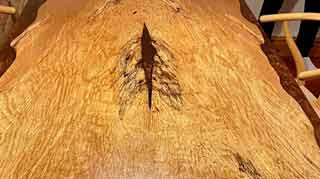
Before you learn how to make spalted wood, let’s teach you how and when you can use spalted wood. Here are some ways you can consider:
Improving Furniture
Spalted wood looks impressive – there’s no doubt about it. That’s why it is one of the most exciting ways to improve how a piece of furniture looks.
Whether it is a dresser, closet, kitchen table, or a simple chair – it makes everything looks superb.
But spalted wood is not as safe as the main body or frame of any furniture. Instead, use it as a cover for healthy hardwoods. That way, you can enjoy the exciting looks of spalted wood but without the drawbacks.
Gorgeous Utensils
Spalted wood is not strong enough to work as the body for furniture, especially the one you’re using to support the weight. But it is still sturdy enough to withstand typical utensil use.
That’s why spalted wood is an excellent choice for bowls, soup spoons, tridents, back scratchers, and much more. The beautiful wood surface plus the decent rigidness make spalted wood an almost perfect alternative for utensil-making.
Decorative Items
Last but not least, you can always use spalted wood for decorative items. It doesn’t matter if we’re talking about pots for plants, portrait frames, figurines, or a wide array of other decorations – spalted wood makes everything look better.
Types of Spalted Wood
When talking about spalted wood, you may think there’s only one type. But there’s not - you can actually find three different types of spalting.
There’s the pigmentation, the white rot, and the zone lines. Here’s a better explanation of each:
Pigmentation
Pigmentation happens when the wood changes its color, usually delivering blue stains or similarly colorful areas.
The process changes the color of the wood in a specific area. It then starts to spread around slowly.
White Rot
When the wood doesn’t change color but instead starts to discolor, then that’s white rot. This is the strongest of all spalting types, as it consumes the wood away rapidly.
White rot not only leaves white marks in the wood but may also provide a brownish-like degrading. Overall, though, it spreads fast and may decay the wood quickly as well if not controlled.
Zone Lines
Finally, you’ll find zone lines – which are red streaks or lines on the surface of the wood. These often happen in the borders of pigmentation or white rots.
These lines appear when the fungi start to eat the healthy wood, making it sort of an interaction zone between the fungi and the particles it consumes from the wood.
Zone lines don’t appear by themselves, and they offer a uniquely gorgeous touch to spalted wood.
All these spalting types can work together, and most of the time, they do. Just be mindful that some woods can have more of each kind of spalting than others – so it’s essential to know how they work.
How to Make Spalted Wood
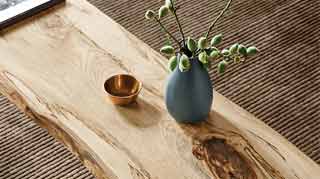
Now that you have a neat idea of how spalting works and the different types – let’s now take a look at how you can make it at home.
Here are some steps you need to follow:
1. Pick the Right Wood
The first thing you have to consider is the type of piece you want to make – and then pick the ideal wood accordingly.
You can find sycamore, pine, maple, birch, and beech to work well with spalting. With their white color, they work like a canvas for spalting.
Similarly, blue-green stains in spalting usually happen in holly. But red stains mostly happen in magnolia, pecan, and tulip poplar.
The color is not everything, though. You also need to consider speed. Woods like black cherry and walnut do not spalt fast enough. But hardwoods like pine or ambrosia maple tend to spalt quickly.
On top of that, you may also consider the drying of the wood. Woods that haven’t been kiln-dried can be used for spalting right away. But the ones that have been dried can’t – as they will take a lot longer time to start spalting and probably won’t even start at all.
Be sure you get the ideal type of wood for the job considering color, quickness, and compatibility with spalting.
2. Moisturize the Wood
Once you have the ideal wood for the job, it is time to moisturize it.
Yes, it sounds a bit weird – you only moisturize your skin, why would you moisturize wood?
Well, this matters because the only way you can make fungi (and thus spalting) happen on your wood is to have enough water content.
The more humidity inside the wood, the more likely it will start to decay faster. That’s why it is essential to place the piece of wood you want to spalt in a humid place.
In case the wood is fresh or green, then it will probably have enough moisture content for the spalting to happen. For this type of wood, you don’t need to do any moisturizing. Instead, you need to prevent it from drying out.
For either purpose, here’s a small set of tips you can follow:
- The wood should be in a place where it gets enough oxygen for the fungi to grow.
- Leaving the piece of wood outside in foggy conditions is a perfect idea to moisturize.
- If there’s no foggy condition to use, you can always place the wood inside a plastic bag and let it breathe every few hours by taking it off.
- Dark areas are better at promoting fungi growth by moisture than sunny areas.
- Spraying water over the wood doesn’t help too much, but it may promote fast absorption, which allows spalting to spread and grow.
As you can see, moisturizing is not too hard. But it is essential. So don’t overlook this step.
3. Let It Breathe
As we said before, letting the piece of wood breathe is vital for the fungi.
This happens because fungi, just like any other type of being, need oxygen to live. Without oxygen, it will struggle to grow and may even die altogether – stopping the spalting completely.
So be sure to not only keep the wood moisturized and humid but also breathing for long.
The more oxygen the piece of wood can get, the more likely it is to start decaying. And sure enough, the faster it will begin to spread around the piece of wood.
Here are a few tips to consider for letting wood breathe:
- Oxygen is richer in places with medium humidity, so taking it to foggy or rainy areas can be an excellent idea.
- Open places for wood are better than closed areas. So try to let the wood rest outdoors instead of indoors.
- Don’t let the wood dry when allowing it to breathe. So try to take it to sufficiently humid places instead, and get it away from too much sun exposure or dry winds.
- Heat is the enemy of both oxygen and moisture, so don’t let it get too hot if you want the spalting to progress.
- Allow the piece of wood to absorb/wick the water from below. But still, let the humidity reach the wood from the top.
If you let the piece of wood breathe consistently and adequately, then there’s a high chance it will grow the fungi faster and more effectively.
4. Feed the Fungi
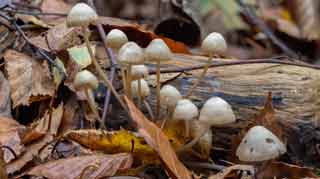
Sure, water and oxygen are food for the fungi. But they won’t provide the nutrients that truly help fungi to grow. Instead, you need to promote decay in the wood by adding components that both encourage growth and make it faster.
Spreading ingredients on the wood that the fungi can use as food also keeps it from eating the wood itself. So while it promotes faster fungi growth, it also prevents the wood from rotting too fast.
How can you feed the fungi then? Well, adding anything that the fungi can use as food – including sugar, cellulose, fertilizer, leaves, and even horse manure. Things like beer contain tons of sugar and cellulose that increase fungi growth exponentially.
Here are a few tips to consider:
- Any type of organic ingredient is probably an excellent food for the fungi. Going from fruit juices to shells and even organic matter when it starts to rot – even beer can be useful.
- Sugar and nitrogen are the best fungi-promoting nutrients, so consider ingredients with these two as the essentials – such as fertilizer.
- Food that gets absorbed by the wood is the best one. So focus on getting liquids over solids, so the wood gets fed better.
There are way too many ways to feed fungi, so be sure to check all the alternatives before starting.
5. Store Correctly
Storing logs and planks of wood is critical for spalting. Just like letting them breathe and moisturizing them, darkness keeps the fungi growing for long.
Now, it is not only about darkness but keeping the wood fed and moisturized In short, it is about preparing the wood for growing the fungi correctly.
The best thing you can do is to place the wood inside a plastic bag with all the food and moisture necessary. And then try to store the logs or planks upright, so the fungi can absorb everything from the raw wood directly.
Here are a few tips to think about:
- Moisture should always be present in the storing process, so be sure to keep the place humid and wet at all times.
- Try to get rid of bugs and other damaging pests. While they may promote further fungi growth, they might end up damaging the wood.
- Be sure the items can last in the storage place for several weeks or months. Fungi grow slowly, so it is critical to have a fixed space that needs little to no maintenance.
- The temperature should be ideal (between 60 and 90 degrees Fahrenheit). That’s the perfect temperature for the fungi to proliferate.
- Keep the storage area as clean as possible from dust, dirt, sand, rocks, and other particles. They’re not necessarily damaging for fungi but can limit the moisture and affect temperature.
In short, you should store the piece of wood by taking into account all the previous steps. It should get nourished and moisturized further so the fungi can grow more.
6. Wait a Few Weeks
Now that you have a better idea of how to feed and moisturize the wood for perfect fungi growth, then it’s time to let it happen.
But you should remember that fungi can take anywhere from a few weeks to a few months and up to years to grow properly. Therefore, be sure to have realistic expectations so you don't give up too soon.
Here are a few things to have in mind:
- If you’re using kiln-dried wood, then you may need to wait a few more weeks than usual. This usually adds 2 to 3 weeks more to the spalting process.
- Spalting could be happening inside the wood and not appear for days/weeks. So give it time for it to appear on the surface.
- Check the piece of wood every two weeks. If you don’t like the spalting progress, then let it keep growing for two more weeks before checking again.
- Once you take the piece of wood out from the storage for more than a week, then the spalting process will stop. So, don’t let it dry outside if you want to keep up with the process.
As you can see, letting the wood to spalt is not the easiest thing to do. But with patience and proper expectations, you can see how the spalting starts growing until it reaches your desired look.
Enjoy Your Spalted Wood!
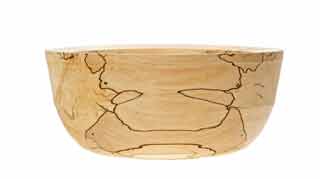
If you followed each step above, then you’re probably going to enjoy a beautiful piece of spalted wood that looks amazing.
There are many uses you can give the wood, and you can achieve tons of different looks, as well. So, there’s simply no limit to what spalting can offer.
But if you genuinely want to make it happen fast and effectively, then follow all our advice. This won’t be easy, but it will be worth it. With our help, you can make this happen without a single drawback.
What are you waiting for then? The sooner you start, the sooner spalting will happen – put hands to work now!
- How to Choose Wood Filament: A Complete Guide - July 17, 2021
- 10 Best Propane Forge Reviews - June 30, 2021
- Best Circular Saw Blade for Plywood : Top 10 Picks - June 30, 2021

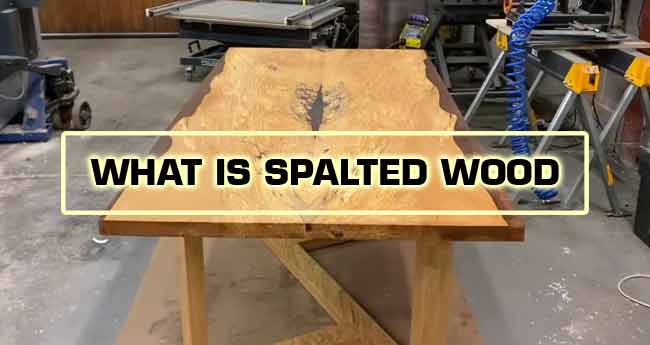

Should bark be removed or left on
Thank you so much!
Hello,
Bark should be removed.